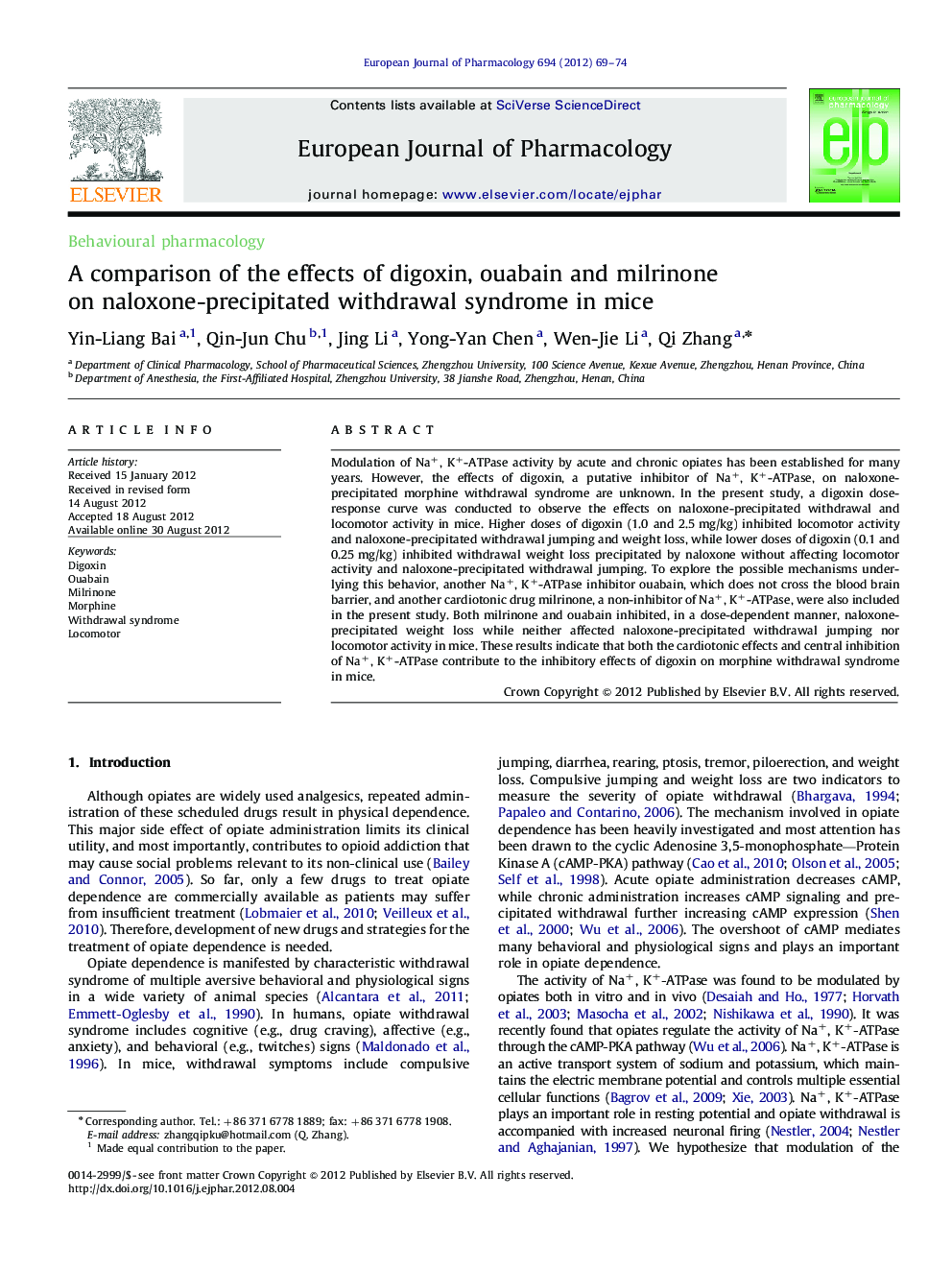| Article ID | Journal | Published Year | Pages | File Type |
|---|---|---|---|---|
| 5829214 | European Journal of Pharmacology | 2012 | 6 Pages |
Abstract
Modulation of Na+, K+-ATPase activity by acute and chronic opiates has been established for many years. However, the effects of digoxin, a putative inhibitor of Na+, K+-ATPase, on naloxone-precipitated morphine withdrawal syndrome are unknown. In the present study, a digoxin dose-response curve was conducted to observe the effects on naloxone-precipitated withdrawal and locomotor activity in mice. Higher doses of digoxin (1.0 and 2.5Â mg/kg) inhibited locomotor activity and naloxone-precipitated withdrawal jumping and weight loss, while lower doses of digoxin (0.1 and 0.25Â mg/kg) inhibited withdrawal weight loss precipitated by naloxone without affecting locomotor activity and naloxone-precipitated withdrawal jumping. To explore the possible mechanisms underlying this behavior, another Na+, K+-ATPase inhibitor ouabain, which does not cross the blood brain barrier, and another cardiotonic drug milrinone, a non-inhibitor of Na+, K+-ATPase, were also included in the present study. Both milrinone and ouabain inhibited, in a dose-dependent manner, naloxone-precipitated weight loss while neither affected naloxone-precipitated withdrawal jumping nor locomotor activity in mice. These results indicate that both the cardiotonic effects and central inhibition of Na+, K+-ATPase contribute to the inhibitory effects of digoxin on morphine withdrawal syndrome in mice.
Related Topics
Life Sciences
Neuroscience
Cellular and Molecular Neuroscience
Authors
Yin-Liang Bai, Qin-Jun Chu, Jing Li, Yong-Yan Chen, Wen-Jie Li, Qi Zhang,
